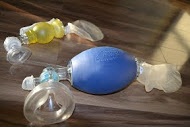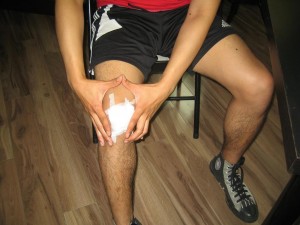As the incident of heart disease and death because of it rises, more and more students choose to enroll in CPR training. Currently,we have eight training programs available. There are five training and three re-certification classes offered to trainees all week. Because we want our high quality classes to be more competitive with other providers, we also offer very affordable training fees. You can visit all six of our location webpages for complete contact and program details.
Locations: Honolulu, Las Vegas, Los Angeles, Portland, San Francisco, Seattle
Giving chest compressions correctly

Cardiopulmonary resuscitation is a medical management technique used by medical professionals and bystander CPR rescuers, in and out of the hospital. It is made up for three major skills: compressions, ventilations, and defibrillation. When you are a trained rescuer, you will be able to perform all three skills given that the situation permits it (e.g. an AED is available). When victims collapse outside of a health care institution, bystanders are the first rescuers and they are typically only able to perform the first two skills.
If you enroll in a CPR training course with us, you will learn how to perform these skills correctly. Here are a few things to remember to get you started:
- Position the victim on a firm surface, such as the floor, before starting compressions. This will maximize the effectiveness of each compression that you give. If a firm or hard surface isn’t available, use a board or something similar and place it under the victim.
- Your position: kneeling beside the victim’s chest, with both hands laced together in the middle of the chest (between the nipples). Victim’s position: flat on back (supine)
- In an adult, the sternum (the bone where the ribs are anchored) should be depressed by at least 5 cm (2 inches).
- Always allow the chest to recoil before giving another compression. Incomplete chest recoil doesn’t allow the heart to fill with enough blood, causing poor perfusion of blood in the body.
- Compression rate: 100 per minute at least; compression:ventilation ratio should be 30:2
The CPR program

Once you have decided to learn CPR, we have eight programs offered. For the public, we have one training class, two for health care providers, and two for health care professionals. Basic programs are around 4 hours long and advanced programs for professionals take two days to complete.
- Heartsaver CPR (public)
- Heartsaver C (health care providers)
- Basic Life Support for Health Care Providers
- BLS for HCPs re-certification
- Pediatric Advanced Life Support (professionals)
- PALS re-certification
- Advanced Cardiac Life Support (professionals)
We only have three re-certification classes available. These classes are for renewal of certificates that are approaching expiry (NOT EXPIRED). We do not allow students who have let their credentials expire apply to a re-certification class.
Credentials are valid for 24 months before they expire. Remember to sign up for a re-certification class before they do!
